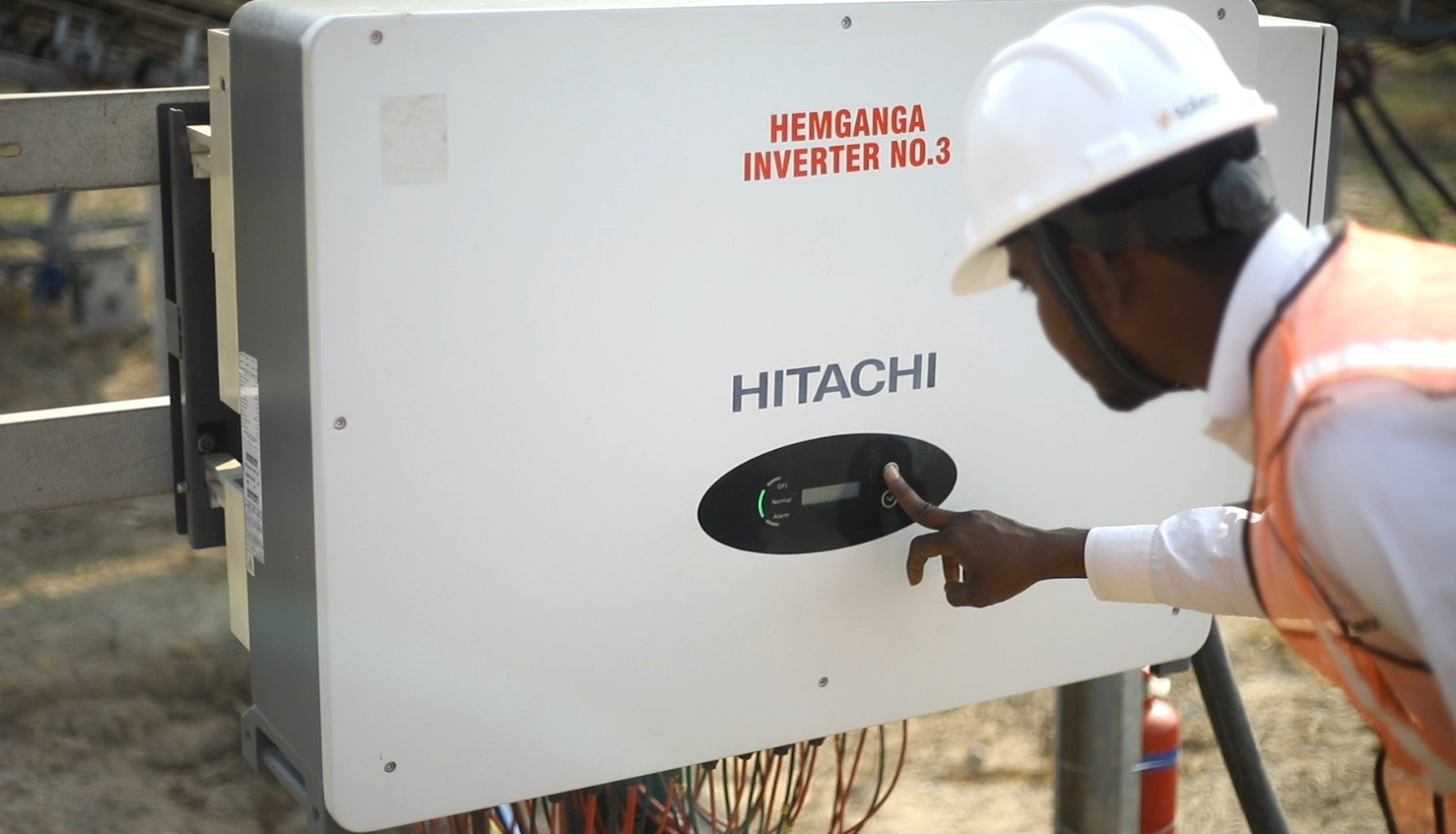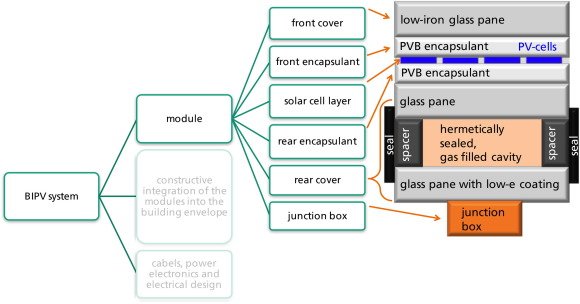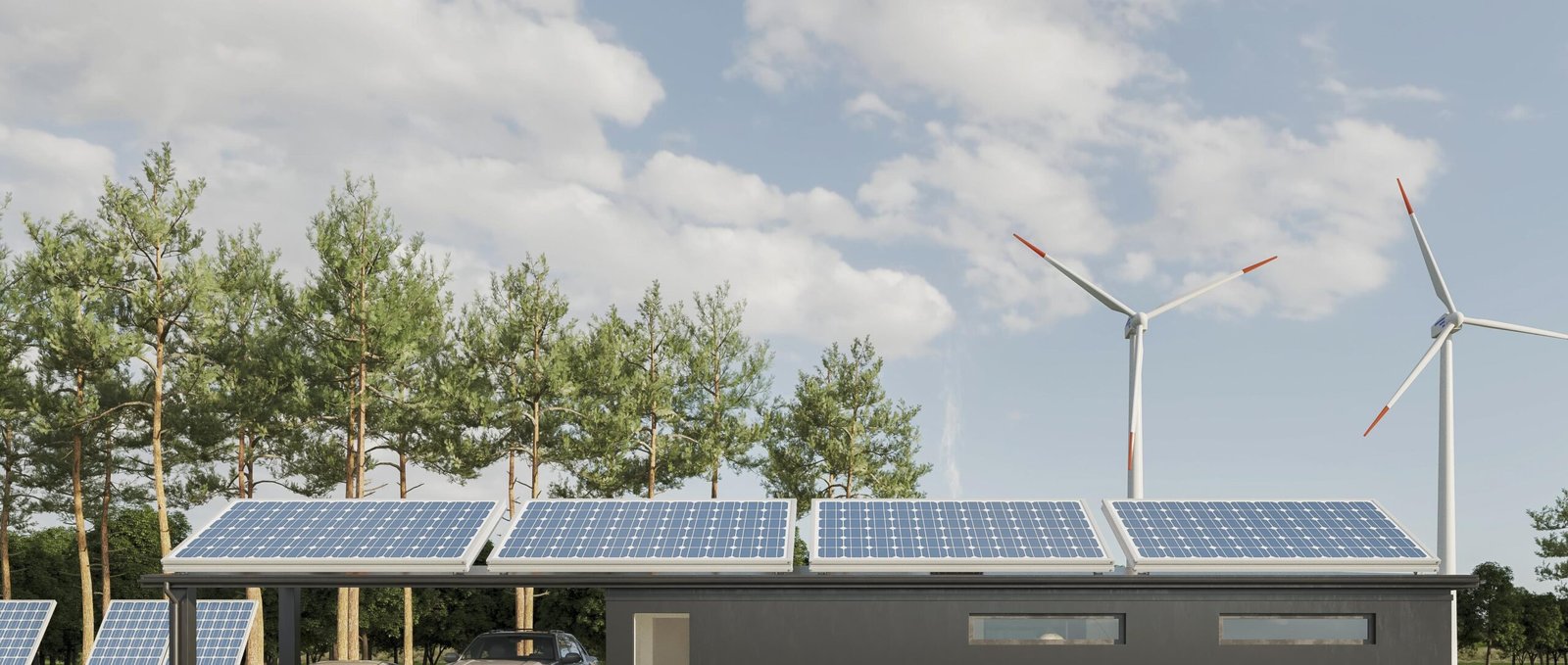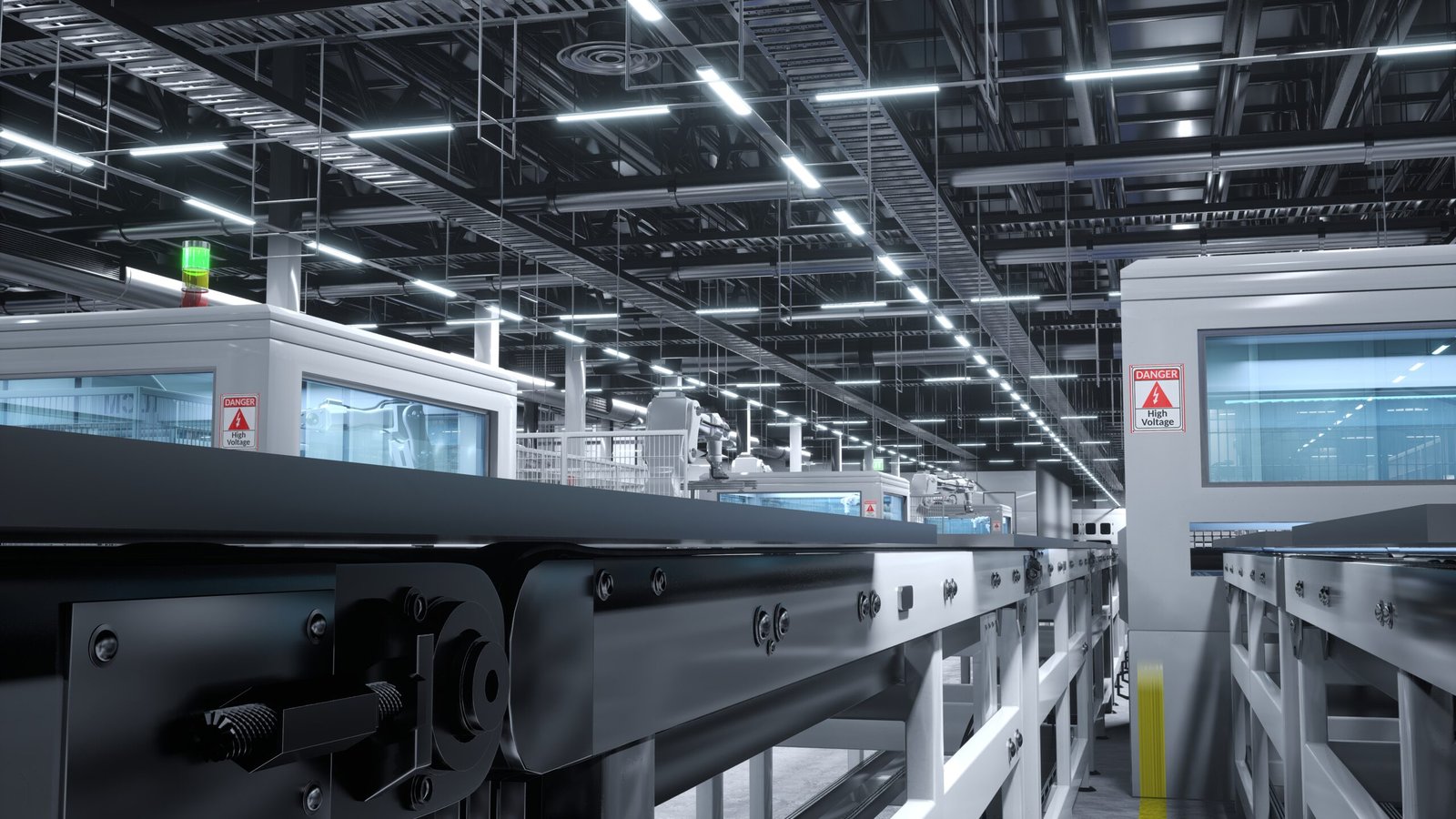As urban areas continue to grow and environmental consciousness rises, apartment dwellers are exploring ways to embrace sustainability. Solar panels, once thought to be suitable only for standalone houses, are becoming increasingly popular for apartment living, offering a clean and renewable energy source even in limited spaces. With advancements in solar technology, apartment residents can now benefit from reduced electricity costs, lower carbon footprints, and increased property value. .
This shift to solar energy in apartments is not only a smart financial choice but also a meaningful way to contribute to a greener future. In this guide, we’ll explore the benefits, options, and practical steps to install and maintain solar panels for apartments, empowering urban residents to harness the power of the sun.
Table of Contents
Benefits of Solar Panels for Apartments
1. Reduce Energy Costs
Solar panels can generate electricity on-site, significantly reducing electricity bills for tenants and building owners. Solar panels can even eliminate the need for electricity bills depending on the size of the solar system and the location.
2. Eco-Friendly and Sustainable
Switching to solar energy reduces reliance on fossil fuels, which in turn reduces carbon footprints. For apartment dwellers committed to sustainable living, solar panels represent an effective way to contribute to a cleaner environment.
3. Energy Independence and Grid Support
With solar panels, apartments can rely less on conventional energy sources, providing greater independence. Moreover, many cities allow net metering, which means excess energy can be fed back to the grid, earning credits or income while helping stabilize local power supplies.
4. Increased Property Value
Installing solar panels for apartments can increase the resale value of an apartment. Many modern buyers actively seek properties with sustainable features, making solar energy an attractive asset in competitive housing markets.

Types of Suitable Solar Panels for Apartments
Selecting the right type of solar panel setup depends on space constraints, installation feasibility, and budget. Here are some common types:
1. Traditional Rooftop Solar Panels
If the apartment building has shared rooftop access, traditional solar panel installations could be feasible. However, this may require coordination with building management or approval from all residents.
2. Balcony Solar Panels
Solar panels for apartment balconies are wired into the mains with the help of an inverter. Balcony solar panels are a great option for apartments with limited rooftop access. These panels can be installed on balcony railings or walls, harnessing sunlight directly from your unit’s available outdoor space.
However, the balcony solar panel is yet to be popular because, when we organize to set the solar panel on the balcony we should necessary to get the permission of the government and also the chairman of the society. It has to be installed in the way of sunlight.
3. Window Solar Panels
Simply put, window Solar Panels for Apartments are glass panels that double as PV panels. PV glass with solar cells is placed on them to harness the sun’s energy. As a result, it generates sufficient electricity to power the property’s electrical appliances.
However, the window solar panel is yet to be popular because, when we organize to set the solar panel in the window we should necessary to get the permission of the Government and also the chairman of the society. It has to be installed in the way of sunlight.

Best solar panels for apartments
With an efficiency rating of 17% to 22%, monocrystalline solar panels are among the finest options for flats. Because it takes fewer panels to generate a sizable amount of power, this is advised.
Monocrystalline solar panels are a very effective way to generate electricity. One silicon crystal makes up a monocrystalline solar cell. Because of this, electrons are able to flow across it more easily, increasing the cell’s ability to generate electricity.
Furthermore, monocrystalline panels can now produce up to 320 watts or more; some can even reach 375 watts. This will provide your apartment with enough electricity.
Challenges of Installing Solar Panels for Apartments
1. Limited Space for Installation
- Unlike standalone homes, apartments have limited roof or outdoor space. Many apartment buildings share roof areas among all residents, which reduces the available surface area for solar panel installation. This limitation often requires creative solutions, such as balcony-mounted panels or window installations, which may not yield as much energy.
2. Shared Building Ownership and Management Approval
- Installing solar panels in apartments typically requires approval from building management, the homeowners’ association, or even other residents. Shared ownership and communal spaces complicate the process, as multiple stakeholders must agree to the installation, especially if it affects the building’s aesthetics or involves roof space used by all residents.
3. Shade and Sunlight Exposure
- Apartments often face challenges with adequate sunlight due to neighboring buildings, trees, or architectural features that cast shadows. This shading reduces the efficiency of solar panels and may limit the amount of energy they can generate, especially for installations on balconies or lower floors.
4. High Initial Costs and Financing Limitations
- Although solar panel prices have declined, the initial cost can still be a barrier, particularly for renters or those on a budget. Furthermore, financing options like solar leases, power purchase agreements (PPAs), or loans may not be as accessible for apartment dwellers, especially if they don’t own the unit.
5. Energy Storage and Usage Constraints
- Apartments often lack sufficient space for battery storage systems that store excess solar energy. Without energy storage, residents may only benefit from solar power during daylight hours and will need to rely on grid electricity at night, potentially limiting savings.
6. Complexities with Net Metering and Legal Regulations
- In many regions, net metering policies are not fully adapted for apartment settings. For instance, in buildings with multiple units, it can be complex to allocate energy credits among individual residents. Moreover, different regions have unique regulations, permits, and approvals required for solar installations in apartment complexes, which can complicate the process.
7. Maintenance and Upkeep Challenges
- Solar panels generally require minimal maintenance, but access can be challenging in apartment setups, especially for rooftop installations shared with other residents. Cleaning and inspecting the panels may require special arrangements, increasing costs and logistical demands.
8. Difficulty for Renters and Short-Term Residents
For renters or individuals planning to move in the near future, the investment in solar panels may not be feasible. Most landlords are hesitant to allow major alterations to properties, and temporary or portable solar solutions, while available, may not be as effective as permanent installations.

Factors to Consider Before Installing Solar Panels for Apartments
Before installing solar panels on an apartment building, key factors to consider include: roof quality, sunlight exposure, energy usage assessment, necessary permissions from building management, roof orientation, panel efficiency, installation cost, potential financial incentives, and the condition of the existing roof; ensuring the building has adequate sunlight exposure and that the roof can structurally support the panels is crucial.
1. Sunlight Availability
Assessing sunlight exposure is essential for maximizing the efficiency of solar panels. Apartments with unobstructed sunlight on balconies or rooftops are ideal. Shade from nearby buildings or trees could impact energy production.
2. Local Regulations and Permits
Many cities require permits for solar panel installations. Consult your building management and local authorities about regulatory requirements and follow necessary procedures.
3. Energy Storage Options
An energy storage system, like a solar battery, allows you to store excess energy for later use. This is beneficial for apartments, especially in areas where net metering isn’t available, as it helps avoid wastage.
4. Budget and Financial Incentives
Analyze your budget and explore available financial incentives like subsidies, tax credits, or low-interest loans that support apartment residents transitioning to solar energy.
Financing Options for Solar Panels for Apartments
Solar panel installations can be made affordable through various financing methods:
- Government Incentives and Subsidies: In order to let people adopt and adapt to solar energy, the government offers tax credits to those who install rooftop solar panels whether it be of a residential or commercial nature. According to the Ministry of New and Renewable Energy, the government pays 30% of the installation cost as a subsidy.
- Group Buying Programs: Some areas offer group discounts for residents in the same building or neighborhood, lowering costs through bulk purchasing.
- Power Purchase Agreements (PPAs): With a PPA, a solar provider installs and maintains the panels, and you pay only for the electricity generated, often at a lower rate than conventional power.
- Leasing Programs: Leasing allows residents to install solar panels without large upfront costs. Monthly payments are generally lower than electricity bills, making solar adoption cost-effective.
Step-by-Step Guide to Installing Solar Panels for Apartment
Step 1: Evaluate Your Space and Energy Needs
Identify where the panels could be installed, such as on a balcony, rooftop, or wall. Estimate your monthly energy usage to determine the size and number of panels needed.
Step 2: Consult with Building Management
Seek permission from your building’s management. For shared rooftops, approval from all residents may be necessary.
Step 3: Research Local Installers and Get Quotes
Reach out to local solar installation companies to get quotes. Ask about their experience with apartment installations, particularly if you’re considering unique setups like balcony panels.
Step 4: Choose Your Panel Type and Setup
Based on available space and energy goals, decide between rooftop, balcony, or portable panels. Ensure compatibility with your building’s energy setup and confirm the logistics with your installer.
Step 5: Secure Financing and Incentives
Apply for applicable subsidies or financing programs. Some countries offer tax credits that reduce installation costs, making the investment more feasible.
Step 6: Complete Installation and Set Up Monitoring
After installation, configure any monitoring systems to track energy production and ensure everything is functioning properly. Many solar setups offer mobile monitoring apps for real-time insights.
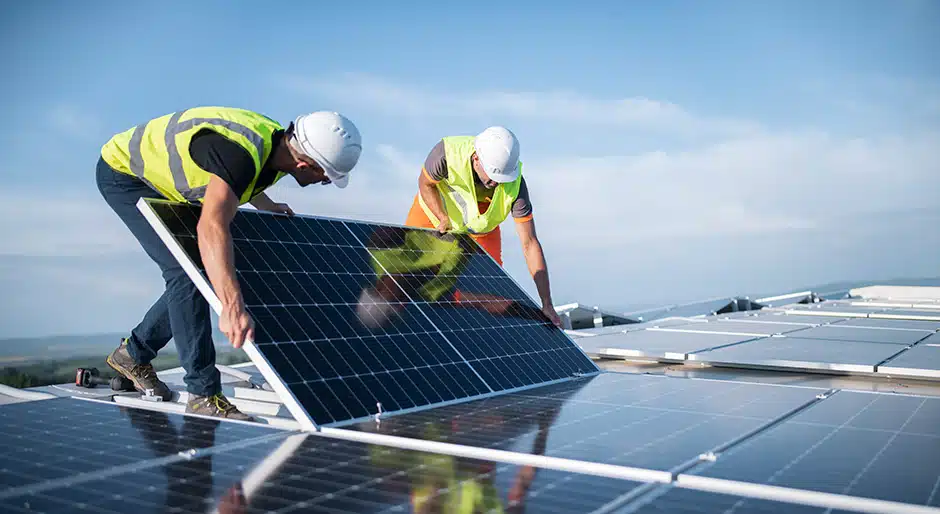
Maintenance of Apartment Solar Panels for Apartments
Solar panels generally require minimal maintenance. Here are some tips to keep them efficient:
- Regular Cleaning: Dust and debris can reduce efficiency. Clean the panels every few months or as needed.
- Inspect for Shade or Obstructions: Ensure that new construction or vegetation growth isn’t shading the panels.
- Routine System Check-ups: Schedule annual inspections to verify the integrity of connections, wiring, and inverters, especially for rooftop setups.
Innovative Solar Technologies for Apartment Living
1. Solar Shingles
Solar shingles blend with traditional roof tiles, providing an aesthetic alternative for apartments with rooftop access.
2. Solar Blinds
Solar blinds are a great alternative for windows, generating energy even in small spaces. They’re an evolving technology that holds promise for urban apartments.
3. Building-Integrated Photovoltaics (BIPV)
BIPV systems replace conventional building materials with solar panels, allowing walls and windows to generate power without compromising aesthetics. Though currently niche, these innovations could revolutionize energy generation in high-rise apartments.
Conclusion
As cities expand and sustainability takes precedence, solar panels are proving to be an efficient and eco-friendly solution for apartment dwellers. By generating clean energy, residents can reduce utility costs, boost property value, and contribute to environmental health. While challenges exist, new technologies, financing options, and government incentives are making solar energy more accessible. Embracing solar power in apartments is a promising step toward a greener future.
Take the first step toward a greener future—explore solar panel options for your apartment and start saving on energy costs!

